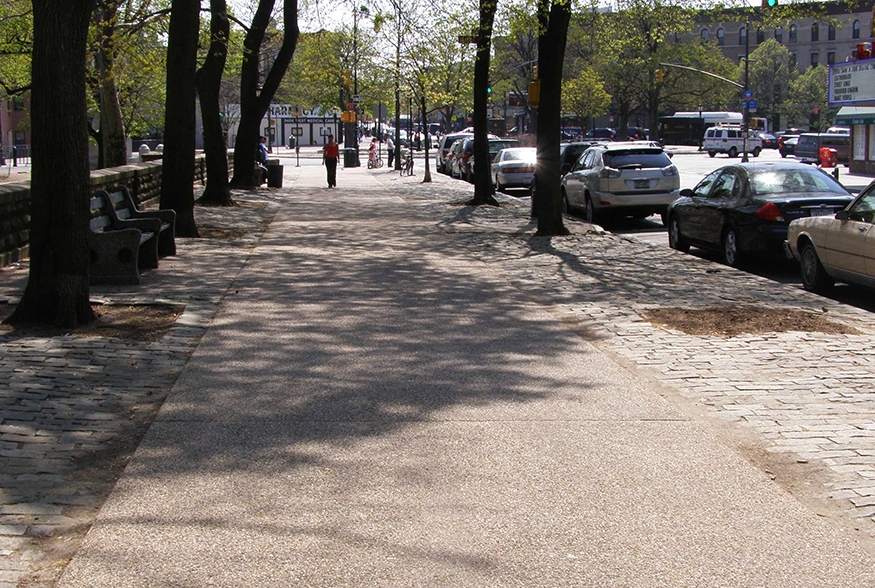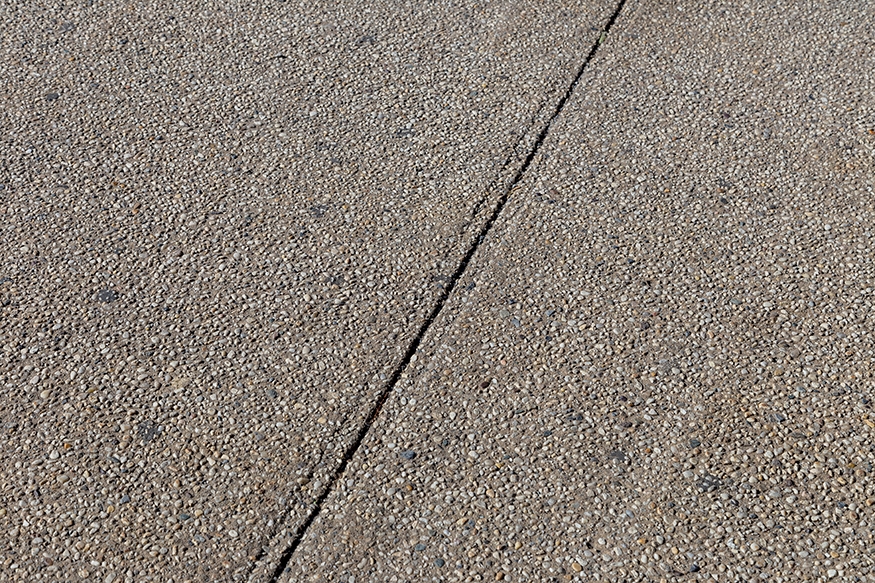Usage: Distinctive
Exposed aggregate, such as pebble-sized stone, can be added to unpigmented or pigmented concrete mixtures to create texture and increase the distinctive quality. Aggregates can vary in size and color to achieve different effects.

Sand-colored concrete sidewalk with exposed aggregate: Prospect Park West, Brooklyn

Concrete with exposed aggregate
Benefits
See benefits of Unpigmented Concrete
- Exposed aggregate creates a textured and more natural appearance
- Exposed aggregate camouflages dirt and gum in high-traffic areas
Considerations
See considerations for Unpigmented Concrete
Application
- Because this is a Distinctive sidewalk treatment, it is best used when applied to entire blocks, rather than to the sidewalks of individual small properties which would create a “patchwork” effect
- Requires PDC approval
Pigmented concrete with exposed light-colored aggregate
- May be used in commercial areas with high foot traffic
Sand-colored concrete with exposed aggregate
- Appropriate for sidewalks adjacent to waterfronts, parks, and other open spaces
Design
Aggregate specification source: DOT Standard Specifications
Pigmented concrete with exposed light-colored aggregate: Special Section 4.13 E
DOT sand-colored concrete with exposed aggregate: Special Section 4.13 E
See design guidance for Unpigmented Concrete
- Sustainability opportunity: Supplementary cementitious materials (SCM)
- Sustainability opportunity: Recycled concrete aggregate (RCA)
Maintenance
See maintenance for Unpigmented Concrete
- Adjacent property owners are generally responsible for maintaining this material
- Use of these materials generally requires a maintenance agreement

